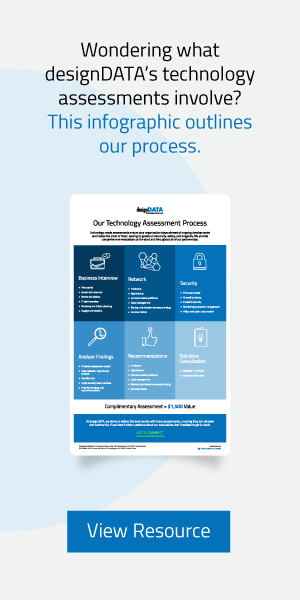The Four Steps to Revolutionizing Your Nonprofit’s Collaboration with Cloud Technologies
The Four Steps to Revolutionizing Your Nonprofit’s Collaboration with Cloud Technologies

As a nonprofit COO dedicated to better serving your organization’s mission and stakeholders, your focus is on managing resources well and helping your team collaborate easily. Leveraging technology to achieve that operational efficiency is a strategic move that will empower your team to work smarter, not harder, in pursuing their goals. Enter: cloud technology, an accessible method for delivering computing services.
While cloud technology isn’t a new concept in the business world, many nonprofits have yet to adopt these tools in their workplace due to limited resources. Most organizations would rather invest directly in their day-to-day programming and beneficiaries rather than in managing the logistics of a digital transformation. As a result, in a 2020 study, only 25% of nonprofits had a defined timeline and strategy for achieving digital readiness.
Although some nonprofits have made progress in recent years, many organizations could still benefit from making the switch. Cloud technologies can have a transformative impact on a nonprofit’s operations, particularly in improving communication, data accessibility, and resource management. Below, you will discover practical tips on implementing cloud solutions in your nonprofit to foster a more collaborative and flexible organizational culture.
The Benefits of Using Cloud Technologies for Nonprofits
Cloud technology is a smart business investment for organizations in any sector: McKinsey even predicts that cloud adoption could contribute $3 trillion to the global economy by 2030. For nonprofits specifically, organizations can experience various advantages from adopting these types of tools into their day-to-day operations, such as:
- Improved Communication: With the cloud, you access collaboration tools over the internet rather than relying on local servers or personal computers. As a result, these solutions offer a centralized platform to simplify your environment and allow you to access everything in one place. The real-time collaboration potential makes it easy for employees to share files quickly and securely no matter where they are located, preventing delays and misunderstandings. This streamlined communication can increase ROI by improving team efficiency and reducing operational costs.
- Enhanced Data Accessibility: In nonprofits, the centralized nature of cloud solutions also makes it easier to leverage data analytics for growth and drives their mission forward. With all data stored in a single, secure location, you have a setup that keeps data updated, relevant and reliable – which is vital for quickly making informed decisions. This helps nonprofits identify trends, measure impact, optimize fundraising efforts, and better allocate resources to areas that can drive the most meaningful results.
- Efficient Resource Management: Cloud services typically offer a cost-effective, pay-as-you-go model that eliminates the need for significant upfront investments in hardware. This flexibility allows nonprofits to scale resources up or down based on their needs, paying only for what they use. Cloud platforms also centralize management tasks, which simplifies administration tasks like updates and maintenance.
Practical Tips for Implementing Cloud Solutions in Your Nonprofit’s Operations
To reap the benefits of cloud technologies for nonprofits, your organization will need to engage in thoughtful planning and execution to smoothly integrate these tools into your existing operations. Here, we cover some actionable strategies that you can follow to maximize these solutions to support your mission.
Start by assessing your organization’s needs
This stage is all about understanding your organizational readiness for cloud technologies. During this assessment, you will need to evaluate your current IT environment, including your infrastructure, hardware data, applications and business processes. You should also seek to clarify your goals for your cloud adoption, which will require engaging your various departments to understanding their specific needs and identify areas for improvement. This will give you the necessary information to decide which functions will transition to the cloud and help you plan out a realistic budget.
Choose the right cloud solutions
Selecting the right cloud solutions will involve choosing which service models best suit your operational requirements, such as Infrastructure as a Service (IaaS), Platform as a Service (PaaS), and Software as a Service (SaaS). After this, you will want to look for specific cloud providers with a strong reputation for support and security. Many organizations opt to use Microsoft 365 and Copilot to boost their productivity as Microsoft is considered a leader in cloud technology platforms.
You will also need to consider whether your organization wants to rely on a public, private, or hybrid cloud hosting model, based on factors such as your data security requirements, compliance regulations, and budget constraints. Selecting a private cloud and data center to host your cloud operations may be a good idea for nonprofits, as they can experience enhanced security and control over their sensitive data.
Manage the transition to the cloud
Developing a detailed migration plan that outlines the scope and timeline will help all stakeholders prepare adequately for the transition, as well as minimize disruption to your workflow. This migration plan should include a communication strategy for informing people about the move before it happens and providing your team with adequate support to adapt more effectively to their new environment. Importantly, once you’ve moved to the cloud, you will want to monitor performance to optimize your system for ongoing efficiency and effectiveness.
Foster a collaborative and flexible culture with your cloud technologies
Encourage employees to actively use and explore the features of the cloud solutions that you introduce into their daily workflow. Offer them access to hands-on workshops and webinars demonstrating practical applications of these tools and connect them to resources such as user guides, FAQs, and online forums where employees can find answers and share tips. Everyone at your nonprofit should be encouraged to stay updated on new features and best practices.
Revolutionize your nonprofit’s technology with designDATA
Harnessing advanced cloud-based nonprofit collaboration tools can transform how your organization’s team interacts and works together. This technology fosters productivity, agility, and responsiveness, all necessary for thriving in a modern operating environment that demands synchronized efforts towards achieving organizational objectives.
When you partner with designDATA for our managed IT services, you will partner with reliable experts who can guide your journey to the cloud and help you manage your environment’s performance and security once you get there.
Contact designDATA today to learn how our cloud solutions can revolutionize your nonprofit’s collaboration and resource management for a more flexible, efficient, and future-ready organization.
The Four Steps to Revolutionizing Your Nonprofit’s Collaboration with Cloud Technologies Read More »








 Look at the how of hybrid meetings
Look at the how of hybrid meetings


